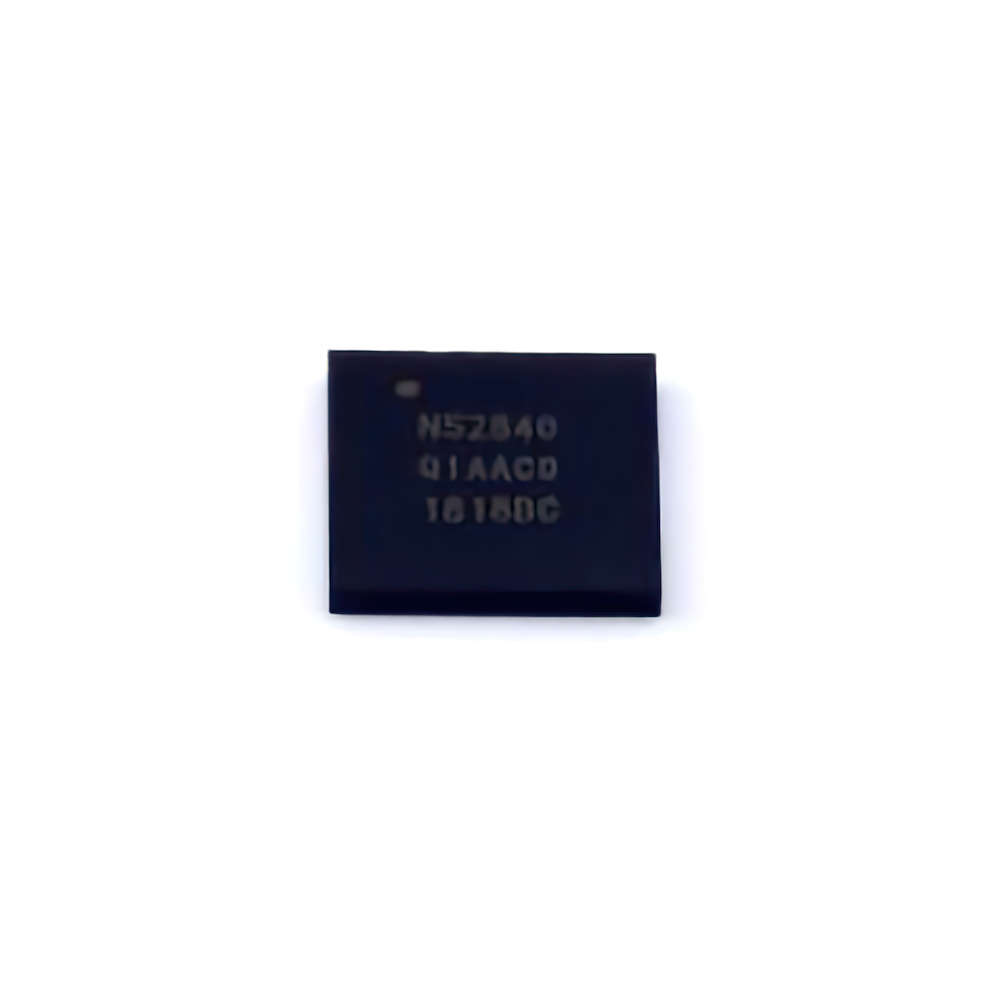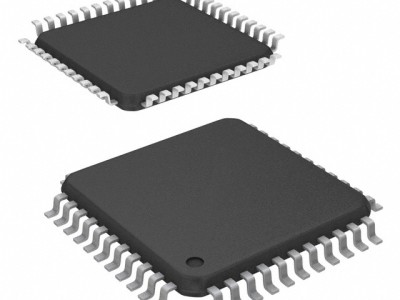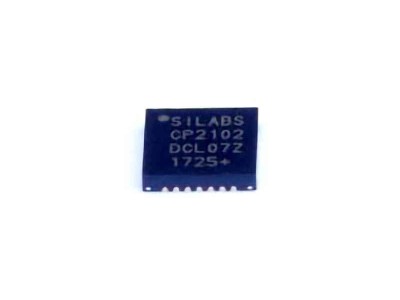
This NORDIC article delves into common troubleshooting issues faced with the N RF 52840-QIAA-R Bluetooth System on Chip ( SoC ), providing practical solutions to overcome them. By identifying typical problems and their remedies, we aim to help engineers and developers maximize the performance and reliability of the NRF52840-QIAA-R .
NRF52840-QIAA-R, troubleshooting,solutions, Bluetooth SoC, common issues, embedded systems, firmware, NRF52840 development, hardware, software problems
Common Troubleshooting Issues and Effective Solutions for the NRF52840-QIAA-R
The Nordic Semiconductor NRF52840-QIAA-R is a highly versatile and Power ful Bluetooth 5.0 SoC (System on Chip) used in a wide range of applications, from wireless audio devices to IoT systems. Despite its advanced features and capabilities, users may encounter issues during the development or deployment phases of their projects. This article provides a detailed look into some of the most common problems associated with the NRF52840-QIAA-R and how to address them.
1. Boot-up Failures: A Common Roadblock
Problem:
One of the most frequent issues developers face with the NRF52840-QIAA-R is failure during the boot-up process. This can manifest in the form of the chip not powering on properly or the device failing to initialize as expected.
Solution:
The first step in resolving this issue is to check the power supply to the chip. Ensure that the input voltage is within the acceptable range (typically 1.7V to 3.6V). If the chip is not receiving the right voltage, it may fail to start up properly. Furthermore, verify that all necessary external components (e.g., capacitor s) are in place and correctly rated.
Another possible cause of boot-up issues can be an incorrect firmware image or bootloader. Re-flashing the firmware via a J-Link debugger or a similar programmer often solves this problem. If you are using an external bootloader, ensure that it is compatible with the NRF52840 and that no software errors are causing the failure.
Key Tips:
Check the power supply for stability and consistency.
Re-flash the firmware using reliable debugging tools.
Verify that the bootloader is correctly set up and error-free.
2. Bluetooth Connectivity Issues
Problem:
The NRF52840-QIAA-R excels in Bluetooth connectivity, but developers may sometimes face issues related to Bluetooth pairing, data transmission, or signal range. These issues can manifest as devices failing to pair or dropped connections.
Solution:
For Bluetooth-related problems, begin by confirming the correct Bluetooth profile and settings. The NRF52840 supports a range of Bluetooth protocols, including Bluetooth Low Energy (BLE), Bluetooth Mesh, and others. Misconfigured settings, such as incorrect advertising intervals or insufficient transmit power, can lead to connectivity problems.
If pairing fails, ensure that the firmware on both the NRF52840 and the paired device is up to date. Sometimes, outdated software can cause compatibility issues. Another common mistake is incorrect handling of Bluetooth events in the application code. Review your event handling logic to ensure that Bluetooth events such as advertising, connection initiation, and data transfer are being managed correctly.
If you’re still experiencing connectivity issues, consider conducting a wireless survey to identify potential sources of interference. The NRF52840 supports 2.4 GHz radio Communication , and in environments with high interference, data transmission can be disrupted. Experiment with different channels or power settings to mitigate interference.
Key Tips:
Ensure correct Bluetooth profile and settings in your firmware.
Update the firmware to the latest version to avoid compatibility issues.
Check for interference and adjust settings for optimal wireless performance.
3. Low Power Consumption: Addressing Unwanted Power Drains
Problem:
The NRF52840-QIAA-R is designed to offer low-power operation for battery-powered devices, but developers may occasionally face unexpected power consumption spikes, especially during idle or low-power modes.
Solution:
Excessive power consumption often occurs when the device is not correctly entering a low-power state. Ensure that your firmware is correctly managing the device’s power modes. The NRF52840 offers several low-power modes, including System OFF, System ON, and Sleep modes. In particular, make sure that unnecessary peripherals, such as the radio or sensors, are turned off when not in use.
Use the Nordic Semiconductor Power Profiler Kit or similar tools to measure current consumption and track power usage patterns in real-time. This will help you identify any components or processes that are consuming more power than expected. Often, the issue can be traced to background tasks that are running when they shouldn’t be.
Another aspect to check is the CPU sleep modes. Developers sometimes forget to enable deep sleep modes or fail to optimize interrupts, which causes the chip to remain active longer than necessary. In your application, ensure that tasks are efficiently scheduled, and interrupts are configured correctly.
Key Tips:
Use power measurement tools to pinpoint power drain.
Double-check the device’s power mode configuration.
Optimize firmware to ensure unnecessary components are powered down.
4. Inconsistent Performance or System Crashes
Problem:
In certain cases, users may experience system instability or crashes, which can manifest as the device freezing or rebooting unexpectedly.
Solution:
System crashes can stem from a range of issues, including memory corruption, insufficient stack space, or bugs in the firmware. First, check for memory leaks or buffer overruns, as these can cause unpredictable behavior in embedded systems. The NRF52840 includes a memory protection unit (MPU) that can help prevent illegal access to memory regions, but it’s still important to carefully review your memory usage.
Another potential cause of instability is improper use of the Real-Time Operating System (RTOS), if one is being employed. Ensure that tasks are not starved for resources or blocked by other tasks for extended periods, which can cause the system to become unresponsive. Using proper synchronization techniques like semaphores and mutexes is essential for maintaining stable performance in multi-threaded applications.
Firmware updates and debugging tools can also help uncover root causes. Utilizing a debugger with trace functionality will allow you to identify where the crash or instability occurs in your code.
Key Tips:
Check for memory corruption, leaks, and buffer overflows.
Optimize task scheduling and use synchronization techniques in multi-threaded applications.
Use debugging tools to track down the source of crashes.
Advanced Troubleshooting Techniques and Best Practices for the NRF52840-QIAA-R
While the previous section covers some of the most common troubleshooting issues, developers working with the NRF52840-QIAA-R may face more complex problems that require advanced techniques and deeper investigation. This section provides additional tips and strategies for troubleshooting complex issues.
5. Flashing and Firmware Update Challenges
Problem:
Flashing new firmware onto the NRF52840 can sometimes result in errors, such as the chip failing to boot or the new firmware not loading correctly.
Solution:
Ensure that the programming process is performed using the correct tools and procedures. For most users, the Nordic Semiconductor nRF Connect for Desktop suite and a J-Link debugger are the preferred tools for flashing firmware. Ensure that the J-Link firmware and software are up to date, as compatibility issues with outdated tools can cause flashing failures.
Another aspect to consider is the integrity of the firmware image itself. If the image file is corrupted or incomplete, it could cause the device to fail during the boot process. Verify the checksum of the firmware image before programming it onto the device.
If you continue to experience flashing issues, it may be worth trying to erase the chip completely before re-flashing. This can be done using the nRF Command Line Tools or similar utilities. Erasing the chip ensures that no leftover settings from previous firmware versions cause conflicts.
Key Tips:
Use up-to-date programming tools, such as J-Link and nRF Connect.
Verify the integrity of the firmware image.
Consider erasing the chip completely before re-flashing if problems persist.
6. Debugging Communication with External Components
Problem:
The NRF52840 is often used in projects where it communicates with external components such as sensors, displays, or other peripherals. If communication with these devices fails, it can be difficult to determine the root cause.
Solution:
Start by checking the communication protocol being used. For instance, the NRF52840 supports SPI, I2C, and UART for serial communication. Ensure that the correct protocol is selected and that the pin connections between the NRF52840 and external components are properly configured.
In addition, verify that the external components are powered correctly and operating within their expected voltage and current ranges. Misconfigured pull-up or pull-down resistors, incorrect voltage levels, or faulty external components can all lead to communication errors.
Use a logic analyzer or oscilloscope to monitor the signals during communication. This will allow you to inspect the signal integrity and timing, helping you identify where the communication is breaking down.
Key Tips:
Double-check the wiring and configuration of external components.
Ensure that the communication protocol is correctly set up.
Use diagnostic tools like logic analyzers to monitor communication signals.
7. Advanced Power Management Optimization
Problem:
In more sophisticated applications, power management may require more advanced techniques than simply switching off unused peripherals. Issues may arise when trying to achieve ultra-low power consumption while maintaining device functionality.
Solution:
Consider using the NRF52840’s advanced power management features, such as the Low Power Mode (LPM) and Power-Optimized Mode (POM). These modes allow the chip to enter ultra-low power states while maintaining minimal functionality, which is especially useful for battery-powered applications.
In addition, review your code to ensure that wake-up events are properly managed. For instance, if the device is in sleep mode, certain interrupts may be configured to wake it up under specific conditions. Optimize these events to ensure that the device stays in low-power states as long as possible while still being responsive to important events.
Key Tips:
Explore low power and power-optimized modes for maximum efficiency.
Properly manage wake-up events to ensure minimal power consumption.
8. Final Troubleshooting Checklists
When all else fails, it’s helpful to follow a structured troubleshooting checklist. This checklist should include the following steps:
Verify the power supply and voltage levels.
Check for correct firmware and bootloader configurations.
Ensure proper peripheral wiring and communication settings.
Review power management settings and optimize them for low power consumption.
Use debugging tools and external hardware (e.g., logic analyzers, oscilloscopes) to diagnose issues.
By systematically following these steps, many of the most challenging problems with the NRF52840-QIAA-R can be resolved efficiently.
Conclusion:
Troubleshooting the NRF52840-QIAA-R SoC may seem daunting at first, but by carefully addressing common issues such as boot-up failures, Bluetooth connectivity problems, and power consumption, developers can ensure smooth operation of their devices. Armed with the right tools and techniques, and by following the best practices outlined in this guide, you can overcome many of the hurdles that may arise during development, ultimately ensuring the success of your embedded Bluetooth projects.
If you’re looking for models of commonly used electronic components or more information about NRF52840-QIAA-R datasheets, compile all your procurement and CAD information in one place.
(Partnering with an electronic component supplier) sets your team up for success, ensuring that the design, production and procurement processes are streamlined and error-free. (Contact us) for free today


